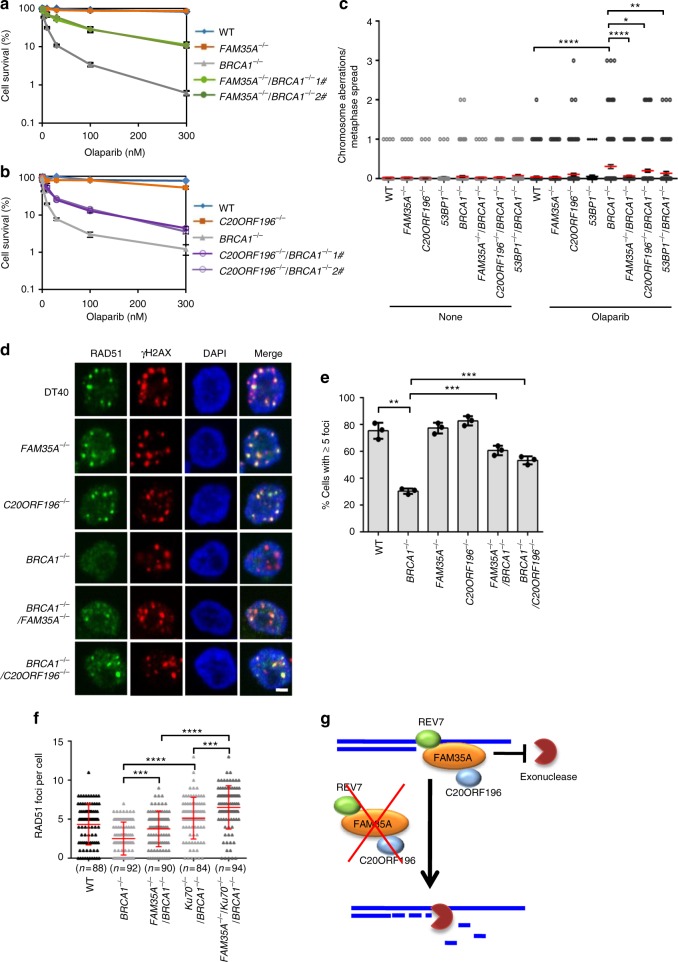Fig. 5.
FAM35A and C20ORF196 block resection in the BRCA1-deficient cells. a, b The absence of FAM35A (a) or C20ORF196 (b) suppressed the olaparib sensitivity of the BRCA1-deficient cells. The mean and s.d. from three independent experiments are shown. c Chromosome aberration of various DT40 cells. Cells were treated with or without 1 μM olaparib for 8 h and then incubated with 100 ng ml–1 colcemid for 4 h before fixing. The mean and s.e.m. are shown. d, e Immunofluorescence (d) and its quantification (e) showing that FAM35A and C20ORF196 block the end resection in the BRCA1-deficient cells. The DT40 cells were treated with 4 Gy X-ray and released 4 h before fixing. The mean and s.d. from three independent experiments are shown. Scale, 2 μm. f A scatter diagram shows RAD51 foci numbers in DT40 cells after X-ray treatment. The mean and s.d. are shown. g A model shows that REV7–FAM35A–C20ORF196 complex blocks resection through binding the 5ʹ-recessed DSB ends. *p < 0.05; **p < 0.01; ***p < 0.001; ****p < 0.0001. Statistics was performed by two-tailed t-test

